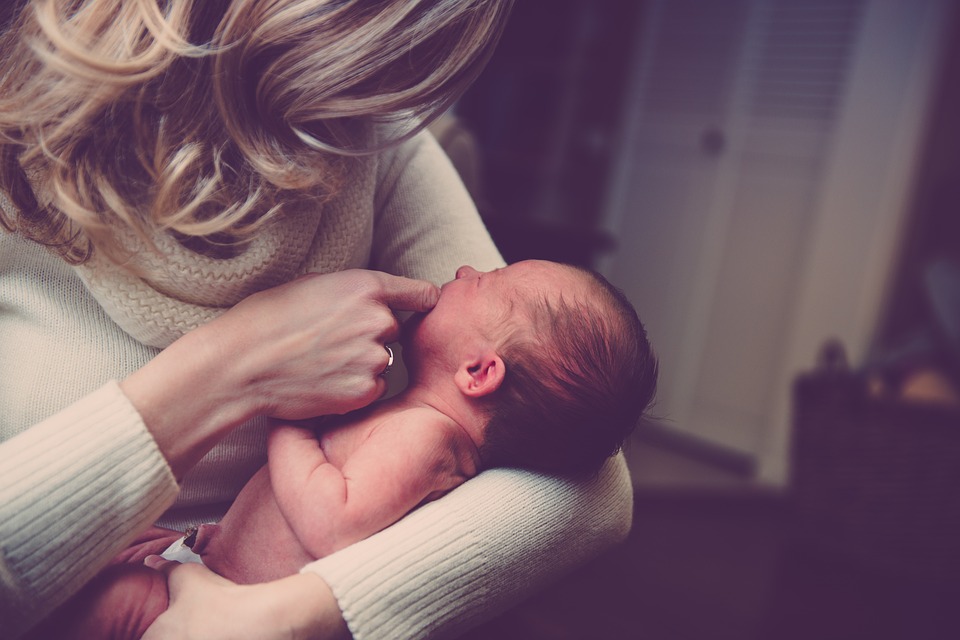There’s no doubting that Summer is well-and-truly here in Australia! While many of us are gearing up for Christmas, it is important to remember that the warmer weather can cause havoc to baby’s sensitive skin.
Here’s my top summer skin care tips for keeping baby’s skin soft and smooth.
Hydrate!
Often dry skin is associated with winter, however babies can experience dryness in the summer months too.
Baby skin is much thinner than an adults and can easily dry out with swimming and simply being in air conditioning. To prevent itchy and parched skin, keep your baby’s skin hydrated with a 100% pure cold pressed organic oil or a baby friendly non-scented (no essential oil) good-quality moisturiser.
If you are practicing baby massage on a regular basis, your babies skin will be receiving hydration (plus other benefits) without making the skin too greasy and requiring additional application of oil, which may be required if using moisturiser alone.
IMPORTANT – to prevent sunburn do not put baby in direct sunlight after applying oil or moisturiser.

Heat rash
Heat rash, also known as prickly heat or summer rash, is really common
during the summer months. Children of all ages can get heat rash, but it’s most common in babies.
Heat rash is caused by clogged sweat glands and appears as bumps (sometimes tiny blisters) on the skin when your baby overheats. The bumps may appear red, especially on light skin.
You’ll most likely see heat rash in the folds of babies skin and on the
parts of the body where clothing fits snugly, including the face, neck, upper torso (chest), stomach, crotch, and buttocks.
Prevent heat rash by keeping your baby in lightweight, loose-fitting clothing. Natural fabrics are best, such as cotton, which is absorbent and allow us to sweat more efficiently than synthetics. Don’t use plastic nappy covers.
Keep your baby indoors on scorching days in an air-conditioned space, or look for cool, shady or breezy places to sit and play outside. Ensure your baby remains hydrated by breastfeeding or formula-feeding often.
If baby does get a rash, cool them down by removing their clothing and run cool water over the skin to rinse away sweat and body oil. You can also apply cool, wet washcloths to lower the temperature of the affected skin.
Let your baby air-dry or use a fan to dry and cool off, rather than rubbing with a towel. Unless your doctor has instructed otherwise, don’t use ointments, creams or baby powders on the rash. These products can block pores and make the skin warmer.
Expose your baby’s skin to the air as much as possible – embrace naked, or dress in a light layer of loose, soft clothing.
If it’s hot at night, use an air conditioner or a fan in your baby’s room. Direct the fan near your baby but not blowing directly on him / her. Alternatively, place the fan far enough away so that only a gentle breeze reaches. You want your baby to be comfortable, not chilled.
You may want to trim your baby’s fingernails to stop scratching if the rash starts itching. You can also put baby mittens or little socks over hands at night to reduce scratching during sleep.
Please note that heat rash can be itchy and some bumps may be tender to touch, heat rash usually isn’t painful or a serious health condition. It is simply a sign that your baby is too warm. If untreated, overheating can lead to serious conditions such as heat exhaustion and heat stroke. Being too warm during sleep can also raise your baby’s risk of SIDS.
If you are unsure, it is a good idea to check with your doctor to make sure that your baby’s skin condition is heat rash. See your doctor if the rash doesn’t go away after 3 or 4 days, appears to be getting worse, or baby has a fever.
Reduce excess exposure
It goes without saying that babies should be kept out of the sun as much as possible. In fact, experts recommend babies should be kept out of direct sunlight for the first six months of life.
When you do go out in the sun particularly over summer, keep your baby covered using loose-fitting clothing and a hat. Sitting under the pram canopy and / or under a tree for shade alone will not reduce excess sun exposure.
Infant sunscreen is available and can be used on areas that cannot be covered with clothes. Be sun smart!
Sun’s out, bums out!
I have already discussed heat rash but the summer heat can result in more skin irritations in babies, in particular nappy rash.
Most babies with mild nappy rash don’t feel sore, but if the rash is severe your baby may feel uncomfortable and be distressed and in pain.
Nappy rash appears as red patches on your baby’s bottom, or the whole area may be red. Their skin may look sore and feel hot to touch, and there may be spots, pimples or blisters.
In addition to heat, nappy rash can be caused by:
- your baby’s skin being in contact with wee or poo for a long time
- the nappy rubbing against your baby’s skin
- not cleaning the nappy area or changing the nappy often enough
- soap, detergent or bubble bath
- alcohol-based baby wipes
- your baby recently taking antibiotics
To reduce the risk of nappy rash, embrace the heat and give your baby as much nappy-free time as possible. When they are in a nappy, use baby powder and / or a barrier balm more frequently. Based on my personal experience, I recommend Sudocrem which is available in most pharmacys and supermarkets.
The simple steps below will help prevent nappy rash as well as help you to clear it up. Follow this advice to help look after your baby’s skin.
- Change wet or dirty nappies as soon as possible.
- Clean the whole nappy area gently but thoroughly, wiping from front to back. Use water or fragrance-free and alcohol-free baby wipes.
- Bath your baby daily – but avoid bathing them more than twice a day as this will dry out their skin.
- Dry your baby gently after washing them – avoid vigorous rubbing.
- Lie your baby on a towel and leave their nappy off for as long and as often as you can to let fresh air get to their skin.
- Do not use soap, bubble bath, or lotions.
- Do not use talcum powder as it contains ingredients that could irritate your baby’s skin.
Nappy rash usually clears up after about 3 days if you follow these hygiene tips. If the rash doesn’t disappear speak to your doctor
You should apply the cream first and wait a few minutes before you apply the barrier cream.
